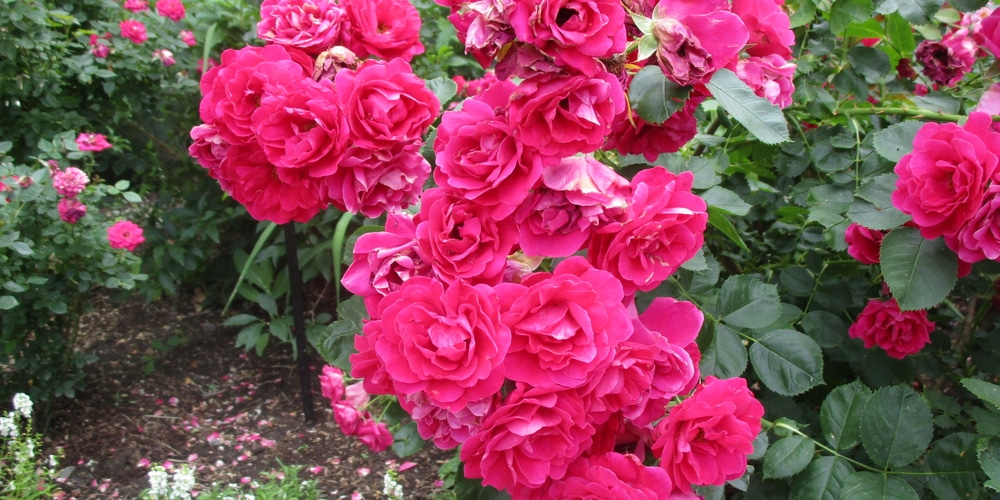Roses are notoriously challenging plants to grow. However, planting them in your yard means adding an elegant and colorful touch to your garden. And with the proper care, all of your efforts to keep your plants safe and healthy will be worth it.
Indeed, you will get stunning flowers, which you can cut and use in compositions to decorate your interiors.
And with their appealing scent and bright colors, they also attract plenty of beneficial pollinators, including bees and butterflies.
Roses Can Be a Challenge
But, as we mentioned, taking care of roses will not be an easy task, especially if you are a beginner gardener. Of course, that doesn’t mean it will be impossible for you to have thriving roses.
It only means that you’ll need to put some effort into growing them and keep an eye on your plants’ conditions.
Roses can be challenging because they are susceptible to many attacks from pests and suffer from several diseases. If you notice white spots on rose leaves and you wonder what you can do to revert your plant to its natural conditions, you are in the right place.
Here, we’ll go over what causes this disease and what measures you should take to contain it (and get rid of it).
The Causes of White Spots on Rose Leaves
Let’s go straight to the core of the question. White spots on rose leaves can have various causes. But usually, if your plants’ leaves look like someone dusted them with flour, you are probably dealing with a fungal infection that affects many roses (and not only): powdery mildew.
This issue can affect many plants, including most vegetables, legumes, and flowers like lilacs.
The fungus prefers warm and humid environments. If you are overwatering your plant or not giving it adequate lighting (these fungi love shady areas), you might be recreating the optimal conditions for it to attack your roses.
Take action as soon as you notice something is wrong with your rose plants to prevent the issues from getting worse. Don’t forget to frequently check your plant’s leaves to ensure everything is fine with your roses.
Powdery mildew infections can weaken your bushes and even lead them to die. Also, it can spread to other plants. If you want to avoid an infestation, you’ll need to take proper measures.
The condition starts with chalky white spots on the upper part of the rose leaves, which can spread to the undersides too. Your roses will dry, and the bush’s leaves might turn yellow.
One of the best ways to prevent this infection is to make sure you plant your roses under enough direct sunlight. Plus, ensure your prune your plants at least once per year to allow for proper air circulation and decrease the risk of extreme humidity around your plant.
If you notice some leaves with signs of mildew, be fast at eliminating them to prevent their spread. To learn more about taking care of your rose plant with white spots, jump to the next section!
How Can You Get Rid of White Spots on Rose Leaves?
As we mentioned, white spots on rose leaves are usually the result of an attack from fungi. So, you can use need oil or insecticide sprays to contain the infestation. If you don’t like harsh treatments, consider spraying your rose leaves with a solution of baking soda, need oil, and dish soap.
Spray your plant’s leaves early in the morning to get the best results. Also, doing so will minimize damage to bees and butterflies, as they tend to be active later in the day. Don’t forget to pass the compound on the top and underside of your leaves: cover them with the solution. Spray all of the leaves, even those that don’t seem to be affected by the disease.
To get rid of the problems once and for all, keep spraying your plant every seven days. Do so until the condition doesn’t appear anymore. You’ll need to reapply the compound if it rains, as water will wash off the insecticide.
Leafhoppers and a fungal infection known as anthracnose can also cause white spots on your rose leaves. The treatment is similar to what we described above, so you shouldn’t worry about that. Just follow our tips to get rid of them!
Related Article: Climbing Roses Zone 8 the Ultimate Guide

